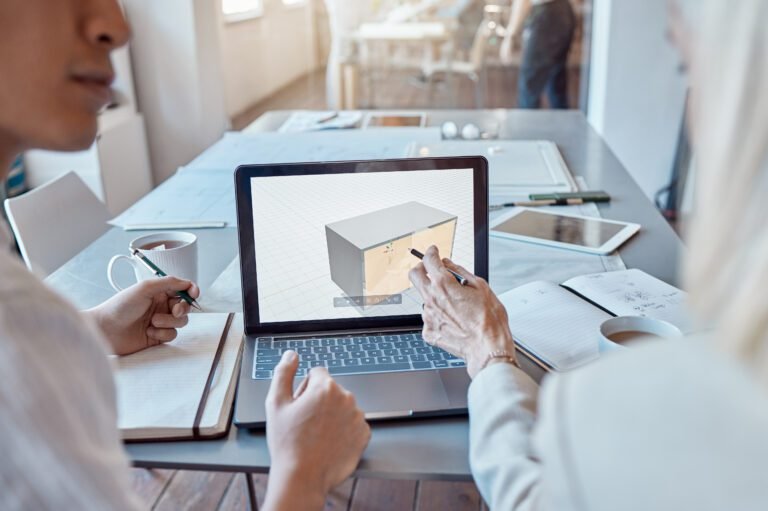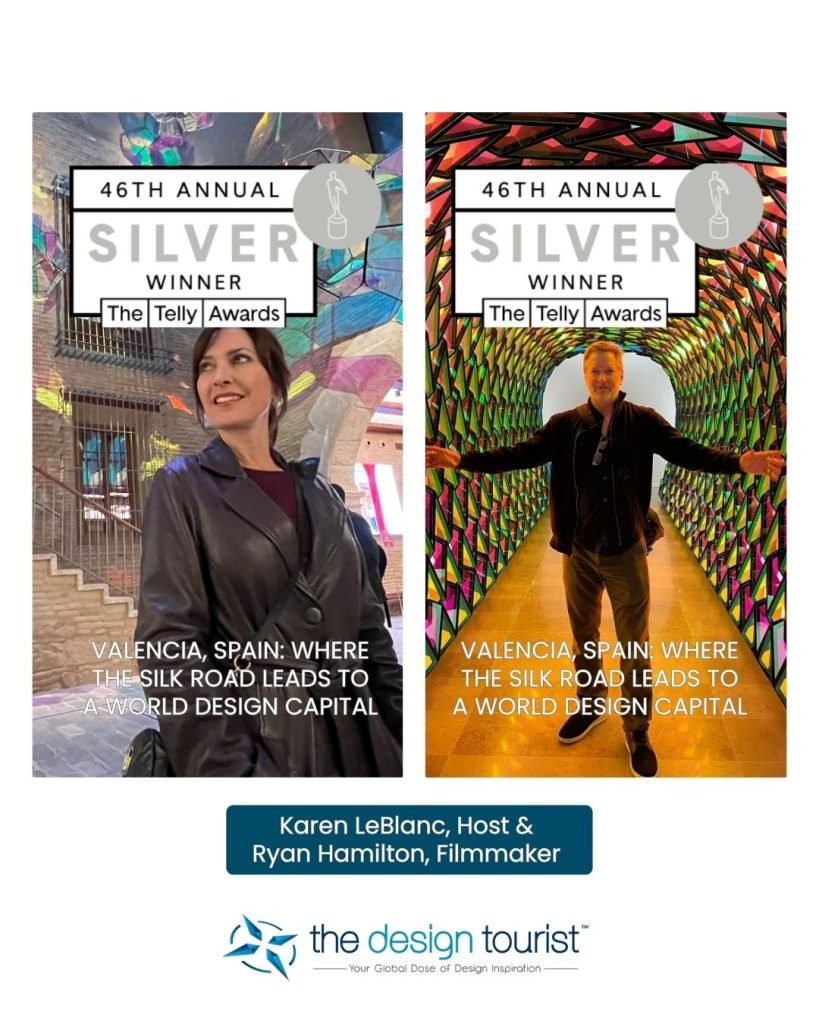Picture this: you’re shopping for a $2,000 sectional sofa online, staring at flat product photos that barely show the texture. Will it fit? Does that fabric look cheap in person? Most shoppers abandon their carts at this exact moment. Yet furniture brands using advanced visualization report conversion increases of up to 94%. The difference? They partner with specialized studios that turn 3D models into persuasive sales tools.
Why Businesses Choose Professional Rendering Partners
The global 3D rendering market reached $5.36 billion in 2025 and experts project it will climb to $23.78 billion by 2034. Not all growth stories are equal. Companies investing in quality visualization see measurable returns – DFS, a UK furniture retailer, achieved a 112% conversion lift and 22-fold ROI after implementing immersive product views across 10,000 items.
Honestly, those numbers make sense when you consider what modern rendering delivers. Photorealistic CGI lets customers rotate products 360 degrees, swap fabrics in real-time, and place virtual furniture in their actual rooms using augmented reality. Research from Charged Retail confirms that interactive 3D content drives 94% higher conversion rates compared to static photography.
“Furniture brands that embed interactive 3D product views report conversion uplifts reaching 94%, while return rates decrease once shoppers visualize scale and finish in-context.” – Threekit Retail Benchmark 2025
The technology does more than close sales. Shopify data shows that proper 3d rendering company implementations reduce product returns by 5% because buyers understand exactly what they’re purchasing. When you’re dealing with bulky furniture or complex architectural projects, avoiding just one return can cover significant rendering costs.
What makes professional studios worth the investment over in-house attempts? Several factors stand out:
- Technical infrastructure: Modern render farms with GPU acceleration deliver results 40% faster than CPU-based workflows, according to Autodesk’s 2026 benchmarks. Hardware advances from NVIDIA raise energy efficiency more than 20-fold, letting firms scale without proportional cost increases.
- Software expertise: Professional teams master tools like V-Ray, Corona, and Unreal Engine 5.3, staying current with AI-driven denoising that brings near-instant feedback to design iterations.
- Industry knowledge: Studios understand architectural visualization standards, product marketing requirements, and platform-specific optimization – whether you’re targeting desktop browsers or mobile AR experiences.
- Asset management: Once created, 3D models become evergreen content that generates marketing materials, configurators, and room planners without repeated photography costs.
Quality rendering requires specialized skills that most companies lack internally. The technology evolves rapidly – Windows OS powers over 73% of rendering workstations globally, but staying current with OpenUSD workflows, cloud rendering, and real-time ray tracing demands dedicated focus.
Real-World Applications Across Industries
Architectural firms use rendering to win bids by presenting photorealistic building previews before construction begins. Product manufacturers showcase thousands of color and material variations without physical samples. Entertainment studios rely on CGI for film effects that would be impossible or prohibitively expensive to capture practically.
In 2025, the practical applications have expanded beyond traditional uses. BMW partnered with NVIDIA Omniverse to create digital twins of their electric vehicle factories, cutting production layout planning costs by 30%. The USD-based workflow lets multiple designers modify scenes simultaneously, collapsing revision cycles from days to hours. That’s the kind of efficiency boost that justifies rendering investments for manufacturing operations.
The furniture sector shows particularly dramatic results. CB2 found that product pages featuring 3D and AR generated 21% higher revenue per visit and 13% larger order sizes. Home Depot saw conversion rates jump up to 200% after rolling out product visualizations. These aren’t marginal improvements – they’re transformative shifts in how digital commerce performs.
“AI algorithms can optimize rendering processes, reducing time needed for complex scenes. Techniques like denoising can accelerate the final output by cleaning up noise in real-time.” – Towards Packaging Industry Report 2025
Real estate marketing has been revolutionized too. Agents show properties that haven’t broken ground yet, letting buyers explore spaces with different finishes and layouts. IKEA and Crate & Barrel deploy AR overlays so customers place virtual models in their homes via smartphone, merging retail convenience with showroom confidence. By the way, this tech isn’t just for large corporations anymore – cloud GPU pricing has dropped sharply, letting smaller studios match larger competitors.
Technical Capabilities That Matter
Not simply. But effective.
When evaluating rendering partners, certain capabilities separate competent studios from exceptional ones. Real-time rendering has become the baseline expectation rather than a premium feature. Customers won’t wait 30 seconds for an image to load while they’re customizing a product. The best platforms deliver instant visual feedback as users change materials, colors, or configurations.
Cloud-based solutions offer flexibility that local rendering farms can’t match. Studios can scale resources for large projects without maintaining expensive hardware year-round. NVIDIA’s professional visualization segment hit $509 million in Q1 FY 2026, up 19% year-over-year, reflecting widespread adoption of GPU-accelerated cloud rendering.
The technical requirements vary by application. Architectural visualization demands accurate lighting simulation and material physics. Product rendering needs pixel-perfect color matching and texture detail. Animation projects require motion capture integration and realistic physics simulation. Gaming assets must optimize for real-time performance across different hardware configurations.
AI integration is transforming workflows too. Machine learning algorithms now handle tedious tasks like UV mapping, texture generation, and lighting adjustments automatically. AI-driven upscaling enhances low-resolution assets to 4K quality without significant quality loss, saving both time and storage costs. Some studios report 40% faster scene completion times using AI-assisted rendering tools.
Honestly, the complexity can overwhelm businesses new to 3D visualization. That’s why experienced rendering companies provide consultation services, helping clients understand which techniques suit their specific needs and budget constraints. A small e-commerce brand might need simple 360-degree product spins, while a luxury furniture manufacturer could require full room scene composition with multiple lighting scenarios.
Measuring Return on Investment
Every marketing investment demands justification, and rendering is no exception. The good news? Performance metrics are straightforward to track. Conversion rates, average order values, return rates, and engagement times all provide clear indicators of visualization effectiveness.
Google research shows 3D visuals achieve 50% higher engagement than static images. That engagement translates to business results – customers who interact with 3D product views spend 4.5 times longer on product pages, according to IPSOS data. Extended dwell time correlates strongly with purchase intent and higher order values.
Returns represent a massive cost center for online retailers. In 2023, US consumers returned $743 billion worth of purchases, accounting for 14.5% of retail sales. Reducing returns even modestly delivers substantial savings. Shopify and Overstock data confirms that purchases made with 3D and AR assistance see up to 40% fewer returns compared to traditional photo-based listings.
The furniture industry faces unique challenges – home and furniture e-commerce sees the lowest conversion rates at just 1.4%, compared to food and beverage at 4.9%. This makes conversion optimization particularly valuable. Jerome’s furniture noticed a 49% conversion rate increase and 211% engagement boost after implementing 360-degree viewers for custom upholstery. EQ3 saw an 88% jump in average order value alongside a 36% conversion increase.
Beyond immediate sales metrics, rendering creates reusable assets that generate value over time. A single 3D model powers product configurators, room planners, AR experiences, marketing renders, and social media content. Compare that to traditional photography, which requires new shoots for each product variation or marketing campaign.
According to a UNCTAD Digital Economy Report, 3D visualization and digital marketing for products increased sales by 13%. That’s a conservative estimate – companies implementing comprehensive visualization strategies often see much larger gains. The key is choosing partners who understand both technical execution and strategic implementation.
Furniture retailer Loaf doubled its year-over-year online sales after visualizing over 100,000 products in high quality. Their success came from enabling customers to pick colors, materials, and finishing touches through intuitive customization tools. Montana furniture uses 360-degree viewers with 4K image quality to showcase endless configuration possibilities, creating a competitive advantage through superior product presentation.
Looking ahead, rendering capabilities will only grow more sophisticated. Unity 6 launched in October 2024, shifting workloads from CPU to GPU and adding multiplayer authoring tools. Epic Games unveiled Twinmotion 2025.2 with cloud rendering and multi-user collaboration for architecture and construction clients. These advances make professional visualization more accessible and powerful for businesses of all sizes. The market is expanding at 18-20% annually, driven by demand for digital twins, immersive commerce, and real-time collaboration tools that reshape how products are designed, marketed, and sold.


































